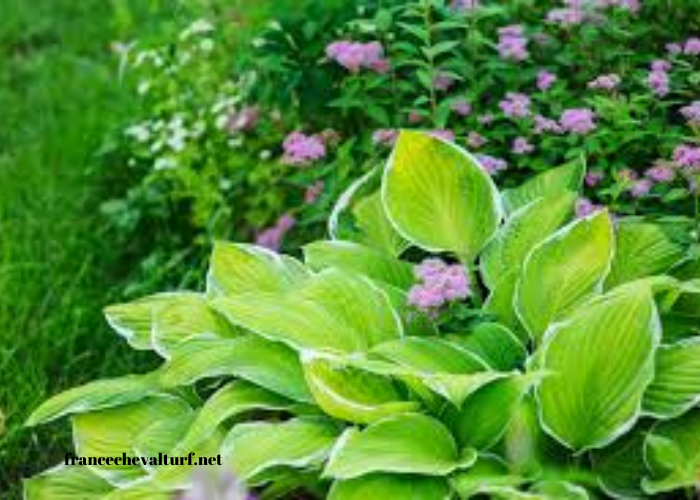Creating a perennial garden is one of the most rewarding endeavors for gardening enthusiasts and beginners alike. Unlike annuals that need to be replanted every year, perennials offer the enduring charm of returning year after year, bringing consistency and timeless beauty to any landscape. However, achieving a stunning perennial garden requires careful planning and understanding of the plants, climate, and maintenance practices. This article delves into the essentials of perennial garden planning, ensuring your garden remains a breathtaking spectacle year after year.
Understanding Perennials
Perennials are plants that live for more than two years. Unlike annuals that complete their life cycle in a single growing season, perennials regrow every spring from their rootstock. Some perennials can live for decades, while others may need replacement after a few years. Their life cycle and hardiness vary depending on species, growing conditions, and care. Understanding these aspects is crucial in choosing the right perennials for your garden.
The Benefits of Perennial Gardens
Perennial gardens offer numerous benefits:
- Longevity: Once established, perennials can last for several years, reducing the need for replanting and providing a stable landscape structure.
- Low Maintenance: Perennials require less maintenance than annuals, as they only need occasional pruning, fertilizing, and watering.
- Cost-Effective: While the initial investment may be higher, perennials are more cost-effective in the long run as they do not need to be purchased and planted every year.
- Diversity: Perennials come in a wide range of colors, sizes, and forms, offering endless design possibilities.
- Environmental Benefits: Perennials help improve soil structure, reduce erosion, and provide habitat for wildlife, contributing positively to the ecosystem.
Planning Your Perennial Garden
Successful perennial garden planning starts with understanding your garden’s conditions, including soil type, sunlight, and climate. With this knowledge, you can choose the right plants and design a garden that thrives year after year.
Assessing Your Garden’s Conditions
- Soil: The type and quality of your soil will significantly influence your perennial garden’s success. Most perennials prefer well-drained soil with a neutral pH, but some may thrive in clay or sandy soils. Conducting a soil test can help determine pH levels and nutrient content, guiding your choice of plants and soil amendments.
- Sunlight: Different perennials have varying sunlight requirements. Some thrive in full sun, while others prefer partial shade. Observe your garden throughout the day to determine how much sunlight each area receives, and choose plants that match those conditions.
- Climate: Consider your region’s climate, including temperature ranges, frost dates, and precipitation patterns. Choose perennials that are hardy in your USDA plant hardiness zone to ensure they survive and flourish.
- Watering Needs: Water availability and drainage are crucial factors. While some perennials are drought-tolerant, others require consistent moisture. Group plants with similar water needs together to simplify watering and ensure all plants receive adequate hydration.
Designing Your Perennial Garden
- Plant Selection: Start by choosing a variety of perennials that bloom at different times of the year to ensure continuous color and interest in your garden. Consider the plant’s height, spread, and growth habit to create a layered look with taller plants in the back and shorter ones in the front.
- Color Palette: Decide on a color scheme that complements your home’s exterior or the surrounding landscape. You can opt for a monochromatic palette for a serene look or mix and match colors for a vibrant, dynamic garden. Remember to consider foliage color and texture, as these elements contribute to the garden’s aesthetic even when plants are not in bloom.
- Garden Layout: Design your garden with pathways, focal points, and seating areas to create a space that is not only beautiful but also functional. Curved paths and borders add a sense of flow and natural movement, while straight lines can create a more formal appearance.
- Companion Planting: Consider planting perennials that complement each other in terms of growth habit, bloom time, and color. Companion planting can also benefit plant health by attracting beneficial insects, deterring pests, or improving soil quality.
- Succession Planting: To maximize visual interest throughout the growing season, plan for succession planting. This involves selecting perennials that bloom in early spring, mid-summer, and fall, ensuring that there is always something in bloom.
Preparing the Soil
Proper soil preparation is vital for the success of your perennial garden. Start by removing weeds, rocks, and debris from the garden bed. Loosen the soil to a depth of at least 12-18 inches to allow roots to establish themselves. If your soil is heavy clay or sandy, amend it with organic matter such as compost, aged manure, or leaf mold to improve texture, drainage, and fertility.
Planting Techniques
When planting perennials, space them according to their mature size to avoid overcrowding. Dig a hole twice as wide and as deep as the root ball, and backfill with soil, gently firming it around the plant. Water thoroughly after planting to settle the soil and eliminate air pockets. Mulch around the plants with organic material like bark chips or straw to retain moisture, suppress weeds, and regulate soil temperature.
Caring for Your Perennial Garden
Once your perennial garden is established, regular maintenance is necessary to keep it healthy and attractive.
Watering
Newly planted perennials need consistent moisture until they establish a robust root system. Once established, many perennials are drought-tolerant, but they may still require watering during dry spells. Water deeply and infrequently to encourage deep root growth.
Fertilizing
Perennials benefit from an annual application of compost or a balanced slow-release fertilizer. Avoid over-fertilizing, as this can lead to excessive foliage growth at the expense of blooms.
Pruning and Deadheading
Pruning and deadheading (removing spent flowers) are essential tasks in a perennial garden. Deadheading encourages more blooms and prevents plants from self-seeding. Prune back plants in late fall or early spring to remove dead or damaged stems and encourage new growth.
Dividing Perennials
Many perennials benefit from being divided every few years. Division rejuvenates older plants, encourages more vigorous growth, and allows you to propagate new plants for other areas of your garden or to share with friends. The best time to divide perennials is in early spring or fall when the weather is cool, and the plants are not in active bloom.
Pest and Disease Management
Monitor your garden regularly for signs of pests or diseases. Early detection and treatment can prevent problems from spreading. Encourage beneficial insects by planting a variety of flowers, and practice good garden hygiene by removing diseased plant material promptly.
Year-Round Interest
A well-planned perennial garden can provide year-round interest, even in the dormant winter months. Incorporate plants with winter interest, such as evergreens, ornamental grasses, or those with striking bark or seed heads. These elements add texture and structure to the garden when flowers are not in bloom.
Conclusion
Perennial garden planning is an investment in the future, offering the promise of year-after-year beauty with proper care and attention. By understanding your garden’s conditions, selecting the right plants, and following sound gardening practices, you can create a perennial garden that not only enhances your landscape but also brings joy and satisfaction season after season. Whether you are a novice or an experienced gardener, the enduring beauty of perennials is sure to inspire and delight for years to come




